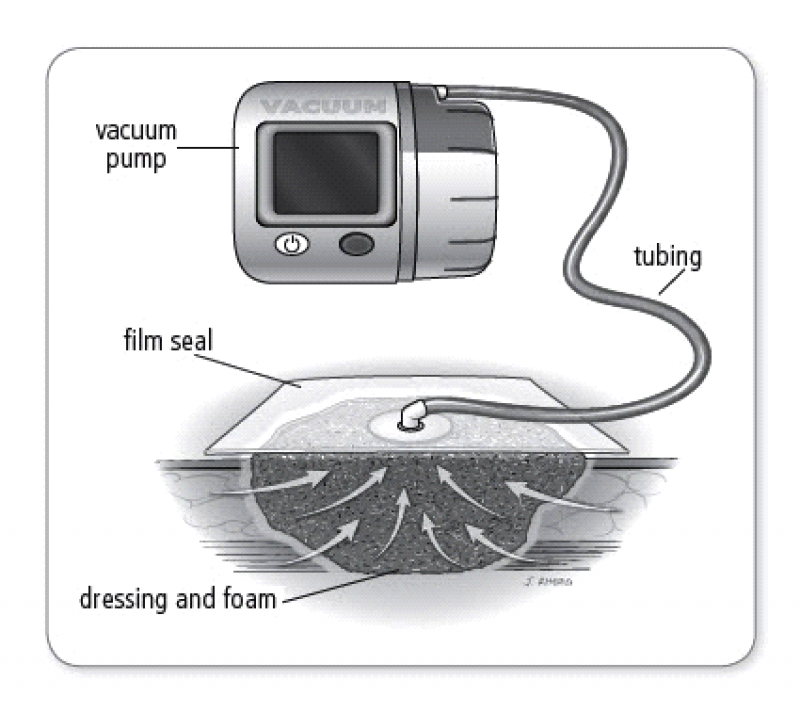Advancements in Negative Pressure Wound Therapy (NPWT) Devices: Enhancing Wound Healing and Patient Outcomes
Introduction
Negative Pressure Wound Therapy (NPWT) has emerged as a groundbreaking treatment modality for managing complex wounds, promoting faster healing, and improving patient outcomes. Over the years, NPWT devices have undergone significant advancements, revolutionizing wound care practices and garnering attention from healthcare professionals worldwide. This article explores the latest innovations in NPWT devices, highlighting their impact on wound healing and patient well-being.
- Portable and Wearable NPWT Devices
Traditionally, NPWT devices were bulky and restricted patient mobility, making it challenging for patients to maintain an active lifestyle during the healing process. However, recent advancements have led to the development of portable and wearable NPWT devices, which offer greater convenience and comfort. These compact devices enable patients to carry out daily activities while still receiving the benefits of negative pressure wound therapy, leading to improved patient compliance and overall satisfaction.
- Smart NPWT Devices with Remote Monitoring
Incorporating smart technology into NPWT devices has transformed wound care management. Advanced NPWT devices now feature remote monitoring capabilities, allowing healthcare providers to track wound progress, fluid output, and other critical parameters in real-time. This data-driven approach facilitates early detection of complications, timely adjustments to treatment plans, and better communication between patients and healthcare professionals, resulting in more efficient wound healing and reduced hospital stays.
- Closed-Loop Control Systems
The introduction of closed-loop control systems in NPWT devices has further enhanced treatment precision. These systems continuously assess wound conditions and automatically adjust negative pressure levels based on real-time feedback. By maintaining optimal pressure throughout the healing process, closed-loop NPWT devices promote better tissue perfusion, reduce the risk of tissue damage, and promote faster wound closure, contributing to superior patient outcomes.
- Antibacterial and Antimicrobial NPWT
Infection control remains a significant challenge in wound care, especially for complex wounds. To address this, NPWT devices are now equipped with antibacterial and antimicrobial features. Some devices incorporate silver-coated foam dressings or antimicrobial agents to combat bacterial colonization within the wound bed, reducing the risk of infection and supporting faster wound healing.
- Customizable Dressings for Different Wound Types
Wounds can vary widely in their nature, size, and location, requiring tailored treatment approaches. Advancements in NPWT devices have introduced customizable dressings that can be adapted to suit specific wound types. These dressings come in various shapes and sizes and may include foam, gauze, or other materials, providing targeted therapy and improving the overall effectiveness of NPWT in managing diverse wound presentations.
- Integrated Wound Vacuums and Drainage Systems
To simplify wound care and enhance patient comfort, some NPWT devices now incorporate integrated wound vacuums and drainage systems. These all-in-one solutions eliminate the need for separate components, streamlining the dressing change process and reducing the risk of complications associated with frequent manipulations, leading to improved patient compliance and wound healing outcomes.
Conclusion
The advancements in Negative Pressure Wound Therapy (NPWT) devices have revolutionized wound care management, significantly improving patient outcomes. Portable and wearable NPWT devices have empowered patients to maintain an active lifestyle during treatment, while smart technology and remote monitoring have enabled healthcare providers to make data-driven decisions and intervene promptly when needed. Closed-loop control systems ensure precise pressure management, while antibacterial and antimicrobial features combat infection effectively. Customizable dressings and integrated systems cater to diverse wound types, tailoring treatment for optimal results. As NPWT devices continue to evolve, they offer a promising future for wound care, enhancing healing processes and ultimately improving the quality of life for patients.
